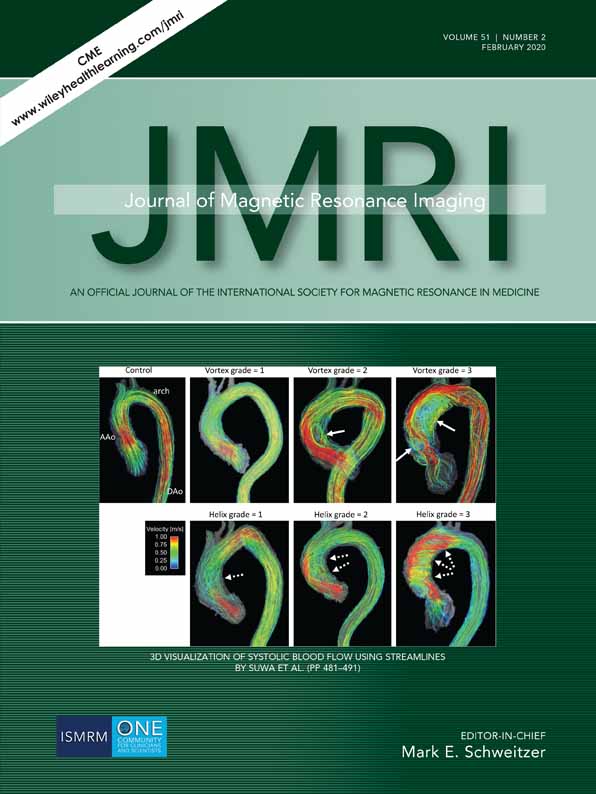Interobserver agreement of PI-RADS v. 2 lexicon among radiologists with different levels of experience
Abstract
Background
Evaluation of interobserver agreement of the PI-RADS v2 lexicon is important to validate the uniformity of this widely used classification.
Purpose
To determine the interobserver agreement of PI-RADS v2 lexicon among eight radiologists with varying levels of experience.
Study Type
Retrospective.
Population
In all, 160 consecutively imaged men with confirmatory targeted biopsy.
Field Strength/Sequence
3T scanner without an endorectal coil. T2-weighted imaging (T2w), diffusion-weighted imaging (DWI), apparent diffusion coefficient (ADC) map and dynamic contrast-enhanced sequence were performed.
Assessment
Eight radiologists (two highly experienced, two moderately experienced, and four less experienced) independently read 130 lesions in the peripheral zone (PZ) and 30 lesions in the transition zone (TZ), blinded to clinical MRI indication and biopsy results. The features described in PI-RADS v2 for TZ and PZ lesions were evaluated.
Statistical Tests
Conger's kappa, percentage of concordance, and first-order agreement coefficient (AC1) were used to evaluate interobserver agreement.
Results
From the features evaluated on PZ lesions, definite extraprostatic extension (EPE) / invasive behavior on T2w had good agreement (AC1 = 0.80), and the others had fair agreement (AC1 = 0.32–0.40). From the features evaluated on TZ lesions, two had good agreement: definite EPE/invasive behavior (AC1 = 0.77) and moderate/marked hypointensity (AC1 = 0.67) on T2w. Encapsulation and lenticular shape on T2w, focal (not indistinct) on DWI and ADC map, and marked hypointensity on ADC map (AC1 = 0.45 to 0.60) had moderate agreement, whereas heterogeneous and circumscribed (not obscured margins) on T2w, marked hyperintensity on high-b-value DWI, and the presence or not of early enhancement in the lesion/region of the lesion (AC1 = 0.30 to 0.38) had fair agreement.
Data Conclusion
Interobserver agreement in PI-RADS v2 lexicon ranges from fair to good among radiologists and improves with increasing experience.
Level of Evidence: 2
Technical Efficacy: Stage 2
J. Magn. Reson. Imaging 2020;51:593–602.
Conflict of Interest
The authors declare that they have no conflicts of interest.




